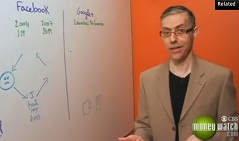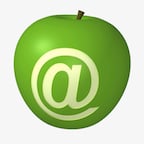 By Pi Wen Looi, Ph.D.
By Pi Wen Looi, Ph.D.
Dr. Pi Wen Looi and Dr. James Ware will be presenting at our complimentary Lunch & Learn Webinar, Leveraging Mobile Work to Engage Your Employees, Thursday, March 7 at noon PT. Register now for this free information session on the latest remote work findings.
The recent Yahoo internal memo that requests employees to work in their offices has stirred up quite a lot of discussion on the Internet. And it’s no wonder—most knowledge workers and Gen Y employees are accustomed to the flexibility of working from home sometimes. People are increasingly working on-the-go. The boundaries of office, workspace, home, and third-places are increasingly blurred. Enabled by the latest mobile devices, tablets, and easy access to the Internet, work is more about what you do or accomplish, not where you get it done.
Numerous studies have shown that people working away from their offices are more productive because they are less likely to be interrupted by coworkers who drop by their cubicles, take fewer sick days, and save time on their long commute. These positive results extend to call center employees, as well. People who telecommute are also more satisfied with their work/life balance as they are better able to control their workflow during the day.
So why is Yahoo requiring their employees to return to work in offices?
 It is hard to say what’s the ultimate goal of the new policy. Based on discussions on the Internet and blogosphere, it seems that some Yahoo employees have taken advantage of their telecommuting policy and are not performing at their jobs. The memo points to the benefits of having better communication and collaboration when people work side-by-side, and increased insights, speed, and quality when employees work in the same physical locations.
It is hard to say what’s the ultimate goal of the new policy. Based on discussions on the Internet and blogosphere, it seems that some Yahoo employees have taken advantage of their telecommuting policy and are not performing at their jobs. The memo points to the benefits of having better communication and collaboration when people work side-by-side, and increased insights, speed, and quality when employees work in the same physical locations.
Regardless of the tone of the memo and how it’s communicated with Yahoo employees, let’s take a look at the key issues Yahoo raised: productivity, communication, and collaboration.
Productivity. By now, many studies have shown that doing work remotely or telecommuting does, in fact, increase workers’ productivity. The issue at Yahoo seems like a performance issue, not a telecommuting issue. If Yahoo employees abuse their telecommuting policy, it’s imperative that managers/leaders take action to hold employees accountable, recognize their performance, and follow-up with employees who do not perform. Perhaps this new policy is the first step Yahoo leaders are taking to hold employees accountable for their performance.
Communication. While it is true that the serendipity that happens at cafeterias, hallways, or water-coolers can lead to great insights, there are many technologies that facilitate effective communications, from smart-phone to online meeting tools. Regardless of whether you work in the office or in a remote location, there are ways to communicate with coworkers. The key is to ensure that access to the company intranet, relevant technology, and the speed of connection are not barriers to remote workers.
Collaboration. Similar to communication, there are many online collaboration tools that enable employees to work together while they are physically apart. Work is increasingly distributed. For companies that have dispersed geographical locations, it is impossible to require a team of employees to always work side-by-side in a conference room. There are stages of collaboration. Sometimes your team will need to work together to ideate, confirm objectives and strategies. Other times your team members will need to go off to do solo work or have quiet time to think before they get together and collaborate on ideas. Solo work and thinking may best be accomplished while working from home or in a space without constant interruptions.
The bottom line: remote work is here to stay. It’s the employees’ responsibility to earn trust from their managers, be accountable for their performance, and accomplish what they set out to do. It’s the management’s responsibility to have relevant people practices that facilitate remote work, hold employees accountable, and have clear consequences when employees do not perform. Last but not least, employees should have easy access to the information and resources they need, either in the cloud or on company servers, to enable productive work from anywhere.
What do you think? Is remote work a peril to productivity? How would you address the issues highlighted by the Yahoo memo? Please share your thoughts and comments below.
Join Dr. Looi and Dr. Ware at our free Lunch & Learn Webinar, Thursday, March 7 at noon PT: Leveraging Mobile Work to Engage Your Employees. Space is limited. Reserve your webinar seat now!
Pi Wen Looi, Ph.D., is the founder and principal of Novacrea Research Consulting. For more information, please visit www.NovacreaResearch.com.








 “If we let ourselves, we shall always be waiting for some distraction or other to end before we can really get down to our work.” –C.S. Lewis. Today, we live in an era of constant distraction: a fast-paced digital age of multi-screens, electronic alerts, instant messages, and alarms, social media, and near-infinite web search & surf possibilities. At work the temptation toward distraction is a very persistent reality; and it’s making us not only less productive but less smart, too.
“If we let ourselves, we shall always be waiting for some distraction or other to end before we can really get down to our work.” –C.S. Lewis. Today, we live in an era of constant distraction: a fast-paced digital age of multi-screens, electronic alerts, instant messages, and alarms, social media, and near-infinite web search & surf possibilities. At work the temptation toward distraction is a very persistent reality; and it’s making us not only less productive but less smart, too. By Jennifer Weland
By Jennifer Weland By Pi Wen Looi, Ph.D.
By Pi Wen Looi, Ph.D. It is hard to say what’s the ultimate goal of the new policy. Based on discussions on the Internet and blogosphere, it seems that some Yahoo employees have taken advantage of their telecommuting policy and are not performing at their jobs. The memo points to the benefits of having better communication and collaboration when people work side-by-side, and increased insights, speed, and quality when employees work in the same physical locations.
It is hard to say what’s the ultimate goal of the new policy. Based on discussions on the Internet and blogosphere, it seems that some Yahoo employees have taken advantage of their telecommuting policy and are not performing at their jobs. The memo points to the benefits of having better communication and collaboration when people work side-by-side, and increased insights, speed, and quality when employees work in the same physical locations. Did you know that only a fraction of the people who want to write a book ever do? Why?
Did you know that only a fraction of the people who want to write a book ever do? Why? Lynda McDaniel is a writing coach and co-founder of The Book Catalysts.
Lynda McDaniel is a writing coach and co-founder of The Book Catalysts. 
 Do you remember the days when you needed a dedicated business card scanning device with its proprietary software to scan business cards? And when integration with other business applications was rudimentary? Well that is then and this is now. The ScanBizCards app is now. After presenting at a conference recently and finding myself with 50+ business cards, this prompted me to take a look at the latest business card scanning apps, which resulted in getting ScanBizCards for the iPhone and significantly streamlining the process of managing business cards.
Do you remember the days when you needed a dedicated business card scanning device with its proprietary software to scan business cards? And when integration with other business applications was rudimentary? Well that is then and this is now. The ScanBizCards app is now. After presenting at a conference recently and finding myself with 50+ business cards, this prompted me to take a look at the latest business card scanning apps, which resulted in getting ScanBizCards for the iPhone and significantly streamlining the process of managing business cards. VUCA stands for volatile, uncertain, complex and ambiguous, a term coined by the
VUCA stands for volatile, uncertain, complex and ambiguous, a term coined by the  As I continue to mull that over, I will commit to these three actions to help myself and others better adapt to our ever evolving VUCA world:
As I continue to mull that over, I will commit to these three actions to help myself and others better adapt to our ever evolving VUCA world:
 As we continue to explore the topic of productivity in the workplace and the various factors that impact our productivity, like people, process, and technology, I asked Deanna Moncrief, our
As we continue to explore the topic of productivity in the workplace and the various factors that impact our productivity, like people, process, and technology, I asked Deanna Moncrief, our 
